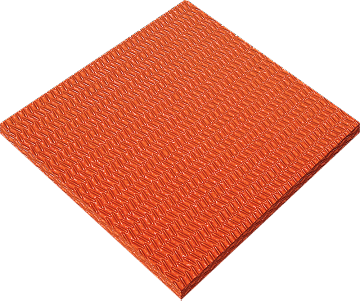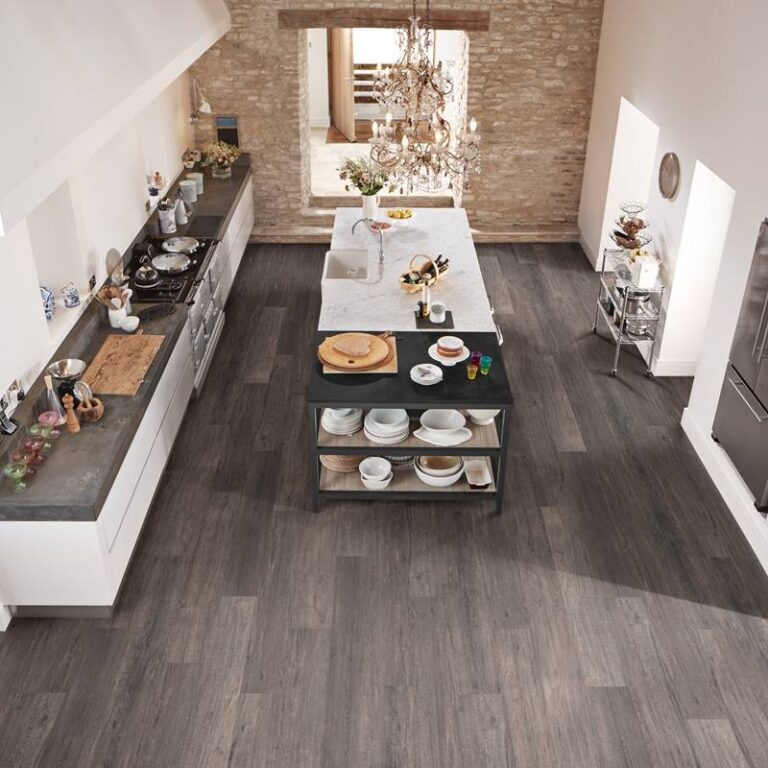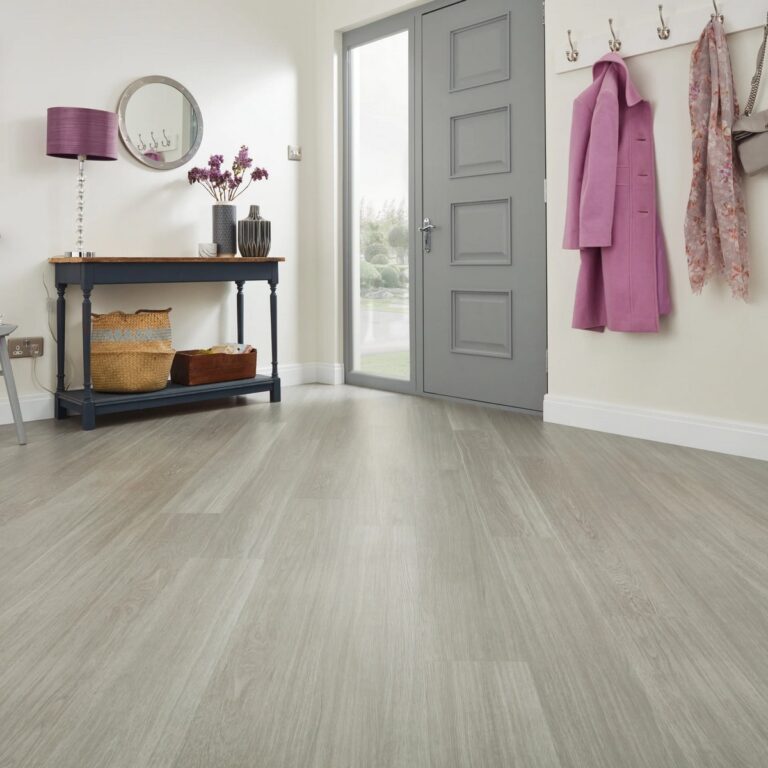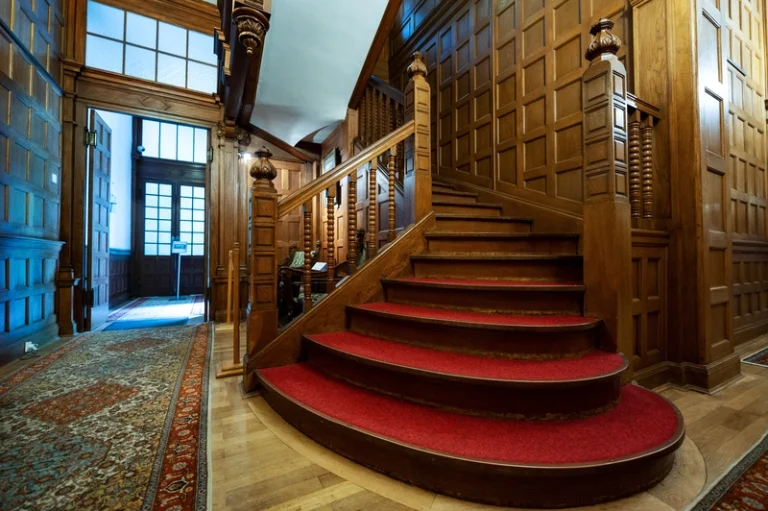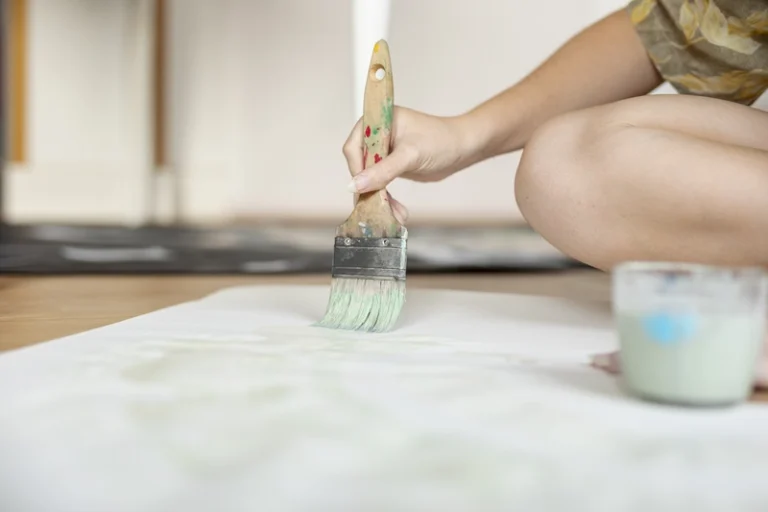Looking to upgrade your flooring but unsure about LVT flooring? In this article, we will explore everything you need to know about the pros and cons of LVT flooring. Discover why LVT flooring is a popular choice for many homeowners, and its benefits such as durability, easy maintenance, and affordability.
We will also discuss the potential drawbacks of LVT flooring and compare it to other flooring options like laminate, hardwood, tile, and carpet. Stay tuned to make an informed decision for your next flooring project!
What Is LVT Flooring?
LVT flooring, also known as luxury vinyl flooring, is a versatile and popular flooring option that replicates the look of natural materials like hardwood and stone while offering enhanced durability and affordability.
LVT flooring is composed of multiple layers, including a resilient vinyl core, a printed design layer, and a protective top layer. This construction makes it highly resistant to scratches, stains, and water damage, making it an ideal choice for high-traffic areas in residential and commercial spaces
Karndean, Floorify and Luvanto are some of the leading brands known for their innovative LVT flooring solutions. These brands offer a wide range of styles, colours, and textures to suit various design preferences.
The installation of LVT flooring is relatively easy and can be done as a floating floor or glued down, depending on the specific product and subfloor conditions. This flexibility in installation methods allows for quick and hassle-free upgrades to any space.
See product: Floorify Planks Apple Crumble
How Is LVT Flooring Made?
The production of LVT flooring involves a process where multiple layers of materials are fused together to create a resilient and aesthetically pleasing flooring solution that offers a wide range of design options for homeowners.
One crucial layer in the manufacturing process is the core layer, which provides stability and durability to the flooring. Additionally, decorative layers featuring high-resolution prints mimic the look of natural materials like hardwood or stone, adding a touch of sophistication to any space. TEKA Flooring is renowned for offering a plethora of customisation options, allowing homeowners to tailor their flooring to suit their unique style and preferences.
Pros and Cons of LVT Flooring
Prior to investing in luxury vinyl tiles (LVT), it’s crucial to understand the pros and cons of LVT flooring. Let’s delve into each aspect one by one.
Pros of LVT Flooring
LVT flooring boasts numerous advantages, including exceptional durability, ease of maintenance, resistance to water and moisture, a plethora of style choices, and affordability, making it a top pick for many homeowners seeking a reliable flooring solution.
a. Durable and Long-lasting
One of the standout features of LVT flooring is its durability and longevity, ensuring that it can withstand high-traffic areas and daily wear and tear without losing its appeal or functionality.
LVT flooring’s exceptional durability extends beyond just regular use; it boasts remarkable resilience to scratches, stains, and fading, making it an ideal choice for busy households or commercial spaces.
The innovative technology behind LVT flooring enables it to resist the damaging effects of UV rays, ensuring that its vibrant colours and patterns stay intact for years to come.
b. Easy to Clean and Maintain
Maintaining LVT flooring is a doddle due to its effortless cleaning requirements, making it a practical choice for busy households or commercial spaces where regular upkeep is essential to preserve the floor’s appearance and integrity.
One of the remarkable features of LVT flooring is its exceptional resistance to stains and spills, which is a significant advantage for areas prone to frequent accidents or spills.
The low maintenance needs of LVT flooring contribute to its popularity, as it saves time and effort for busy individuals or businesses looking for hassle-free flooring options.
The easy cleaning procedures of LVT flooring involve simple sweeping, mopping, or gentle cleaning solutions, eliminating the need for harsh chemicals and reducing exposure to harmful VOCs, promoting a healthier indoor environment.
c. Water and Moisture Resistant
LVT flooring is inherently resistant to water and moisture, making it an ideal flooring choice for areas prone to spills or high humidity levels, such as kitchens, bathrooms, and basements.
One of the key advantages of LVT flooring is its waterproof characteristics, providing a protective barrier against water infiltration. This feature sets it apart from traditional flooring materials like hardwood or laminate, which are more susceptible to water damage.
In moisture-prone environments, LVT flooring offers peace of mind as it is highly resistant to warping, swelling, and mould growth that can result from exposure to moisture. Compared to VOC vinyl flooring, LVT is a healthier alternative with lower emission levels, making it a sustainable choice for maintaining indoor air quality.
d. Variety of Styles and Designs
LVT flooring offers a wide range of styles and designs, from lifelike wood and stone patterns to modern and abstract visuals, allowing homeowners to select flooring that complements their aesthetic preferences and interior decor.
One of the main advantages of LVT flooring is its capability to replicate the appearance and texture of natural materials such as hardwood or marble, but at a more affordable cost. Customisation options are also plentiful in LVT flooring, with the ability to mix and match various colours and patterns to create unique designs. Whether you lean towards a sleek and minimalist style or a daring and vibrant appearance, there are numerous possibilities to showcase your personal taste through LVT flooring.
e. Affordable
Along with its many benefits, LVT flooring is known for its affordability, providing a cost-effective flooring solution that delivers premium quality and aesthetics without breaking the bank.
One of the key value propositions of LVT flooring is its durability, requiring minimal maintenance and boasting a long lifespan that saves on replacement costs over time. The easy installation process of LVT flooring reduces labour expenses, making it a budget-friendly choice for homeowners.
Compared to traditional flooring options, such as hardwood or stone, LVT flooring offers a more affordable alternative without compromising on style or performance. Its ability to mimic the look of natural materials at a fraction of the cost makes it an attractive option for those looking to achieve a high-end aesthetic on a limited budget.
Cons of LVT Flooring
What are the disadvantages of lvt flooring? Whilst LVT flooring offers numerous advantages, it also comes with some drawbacks, including susceptibility to scratching, potential slipperiness when wet, limited eco-friendliness, possible need for professional installation, and sensitivity to extreme temperatures.
One major issue with LVT flooring is its scratch resistance. Unlike hardwood flooring which can be sanded and refinished to remove scratches, LVT is more prone to visible damage from daily wear and tear. The smooth surface of LVT can become slippery when wet, posing a safety hazard, especially in areas prone to moisture.
Another downside is its environmental impact. LVT is often made from PVC, a material known for its environmental concerns due to its production process and potential for off-gassing harmful chemicals. This makes it less sustainable compared to other flooring options like sustainably sourced hardwood.
a. Can Be Prone to Scratching
One common drawback of LVT flooring is its susceptibility to scratching, especially in high-traffic areas or when sharp objects are dragged across the surface, requiring homeowners to take precautions to minimise damage and maintain the floor’s appearance.
Scratching can detract from the beauty of your flooring, impacting its overall aesthetic appeal. To counter this issue, investing in scratch-resistant LVT options can significantly reduce the risk of marks and blemishes. Another effective measure is placing protective pads under furniture legs to prevent them from scratching the surface when moved.
Regular maintenance is also crucial for preserving your LVT floor’s integrity. By promptly cleaning up spills and adopting a no-shoe policy indoors, you can prevent dirt and debris from accumulating and causing scratches over time.
b. Can Be Slippery When Wet
Another potential downside of LVT flooring is its tendency to become slippery when wet, posing a safety hazard, particularly in areas prone to moisture or spills, necessitating the use of rugs or mats to enhance traction and prevent accidents.
Along with rugs or mats, there are other effective anti-slip solutions that can be applied to LVT flooring to reduce the risk of falls. Underfloor heating systems, for instance, not only provide comfort but also help in drying out the surface quicker, minimising the chance of slipping. It is essential to regularly clean and maintain the flooring to remove any residue that may exacerbate its slipperiness.
c. Not as Eco-Friendly as Other Options
Compared to some eco-friendly flooring alternatives like hardwood or natural stone, LVT flooring may not be as environmentally friendly due to the presence of VOCs (volatile organic compounds) in some vinyl flooring products, requiring buyers to consider the sustainability aspects.
While LVT flooring boasts durability and water resistance, its production process often involves the release of harmful VOCs into the atmosphere, contributing to indoor air pollution and potential health risks. This environmental impact raises concerns among eco-conscious consumers who prioritise reducing their carbon footprint. Seeking sustainability certifications such as LEED or FloorScore can guide buyers towards more environmentally responsible options.
Exploring green alternatives like bamboo flooring, cork, or reclaimed wood can provide more sustainable choices that utilise natural materials and offer comparable aesthetics without compromising on eco-friendliness.
d. May Require Professional Installation
Whilst DIY installation is possible for LVT flooring, some homeowners may prefer or need professional installation services to ensure proper fitting, alignment, and long-term performance, adding to the overall cost and installation time.
Professional installation of LVT flooring offers several advantages that can justify the additional cost and time investment.
- Expert installers have the experience and tools to ensure that the flooring is installed correctly, minimising the risk of errors or issues down the line.
- Opting for professional installation can help maintain the warranty compliance provided by top brands, ensuring that any potential future claims are not jeopardised due to improper installation.
- Professional installers can achieve a level of precision fitting that may be challenging for a DIY project, resulting in a seamless and visually appealing final result.
e. Can Be Affected by Extreme Temperatures
Extreme temperature fluctuations can impact LVT flooring, leading to potential expansion, contraction, or warping issues, especially in environments with inconsistent temperature levels, prompting homeowners to maintain stable indoor conditions for optimal flooring performance.
These extreme temperature variations can cause the LVT flooring to swell or shrink, affecting its overall integrity and appearance. To mitigate these effects, it is crucial to control the temperature of the space where the flooring is installed. Keeping the indoor temperature within the manufacturer’s recommended range helps ensure the longevity of the flooring.
Warranty coverage for temperature-related damage may also be contingent on following the specified temperature guidelines. Considering HVAC settings, particularly in regions with extreme weather fluctuations, is essential to prevent sudden temperature shifts that can damage the flooring.
How Does LVT Flooring Compare to Other Flooring Options?
When evaluating flooring options, it’s essential to understand how LVT flooring stacks up against alternatives like laminate, hardwood, tile, and carpet flooring in terms of durability, maintenance, design choices, and overall performance.
- One of the standout advantages of LVT flooring is its exceptional durability compared to many other flooring types. While laminate flooring can scratch and dent easily, and hardwood flooring is susceptible to water damage and scratches, LVT stands out for its scratch, water, and stain-resistant properties. LVT offers a wide array of design choices, often replicating the look of natural materials like wood and stone with remarkable realism.
- In terms of maintenance, LVT requires minimal upkeep, making it a popular choice for busy households or commercial spaces. Regular sweeping and occasional mopping are usually sufficient to keep LVT floors looking pristine.
- Installation considerations for LVT include the ability to be installed over existing floors, saving time and reducing renovation costs. This quick and easy installation process is a significant advantage compared to the more labour-intensive installation methods of hardwood or tile flooring.
- Cost-effectiveness is another area where LVT flooring shines. While hardwood and tile flooring can come with a hefty price tag, LVT provides a cost-effective alternative without compromising on quality or style. With top brands like Shaw, Mohawk, and Armstrong offering a wide range of LVT options, consumers can find a quality product to suit their budget and design preferences.
LVT vs. Laminate Flooring
When pitting LVT against laminate flooring, homeowners must weigh factors like water resistance, durability, maintenance needs, and design versatility to determine the best fit for their space and lifestyle.
One of the key differences lies in the construction of these flooring types. Laminate flooring typically consists of four layers—a wear layer, a design layer, a core layer, and a backing layer, whilst LVT is constructed with multiple layers including a base layer, a printed design layer, a wear layer, and often a protective top coat.
Installation methods vary between the two. Laminate flooring is often installed as a floating floor system, with planks or tiles locking together, whilst LVT can be installed using various methods such as glueing down, clicking together, or loose-lay.
LVT vs. Hardwood Flooring
The battle between LVT and hardwood flooring centres on factors such as cost, maintenance, aesthetics, and environmental impact, with each offering unique advantages and considerations for homeowners seeking durable and visually appealing flooring solutions.
While hardwood flooring exudes timeless elegance and warmth due to its natural wood composition, LVT, or luxury vinyl tile, provides remarkable durability and waterproof properties that make it ideal for high-moisture areas.
The installation process differs significantly between the two materials; hardwood usually requires professional installation and acclimatisation to the environment, whereas LVT offers easy-to-install options such as click-and-lock mechanisms or peel-and-stick adhesives, enabling homeowners to undertake DIY projects.
LVT vs. Tile Flooring
In the showdown between LVT and tile flooring, homeowners must balance factors like installation complexity, comfort underfoot, maintenance requirements, and design options to select the ideal flooring type that meets their functional and aesthetic needs.
In terms of installation convenience, LVT takes the lead with its easy click-and-lock systems that appeal to DIY enthusiasts. On the other hand, tile flooring often necessitates professional installation due to the precision required for grouting and levelling.
In terms of warmth retention, tiles tend to feel cooler underfoot, which can be preferred in warmer climates but may require heating solutions in colder regions. In contrast, LVT offers better insulation against cold temperatures, providing a cosy feeling during winter months.
LVT vs. Carpet Flooring
When deciding between LVT and carpet flooring, homeowners should consider aspects like allergen resistance, ease of cleaning, durability, and sound insulation to determine the most suitable flooring type for their living space or commercial property.
One of the key differences between LVT and carpet flooring lies in comfort. While carpet is known for its plush and soft feel underfoot, providing a cosy sensation, LVT offers a firmer surface that can be enhanced with underfloor heating for added warmth. In terms of maintenance requirements, carpet tends to trap dust and allergens, requiring regular vacuuming or steam cleaning, whereas LVT is easy to maintain with simple sweeping and occasional mopping.
Rely on TEKA Flooring for premium LVT flooring. TEKA offers a diverse selection of Luxury Vinyl Tiles in various colours, designs, and textures sourced from leading brands. Go get your luxury vinyl tiles in Peterborough, UK today from TEKA Flooring, all at a fraction of the cost!
Karndean Flooring Exclusive Sale Alert! Grab high-quality discounted LVT from Karndean, like the Karndean Art Select Oak Royale Glacier Oak, previously priced at £62.49, it’s now available for just £56.24 or Karndean Knight Tile Rigid Core Honed Charcoal Slate, formerly listed at £42.99, it’s currently offered at a reduced price of only £38.69.
Luxury Vinyl Tiles (LVT) offer a straightforward installation process, suitable for both DIY enthusiasts and those who prefer professional assistance. For optimal outcomes, TEKA Flooring offers hassle-free floor installation services catering to residential, commercial, and specialised needs. Explore further details here.
Read Also:









